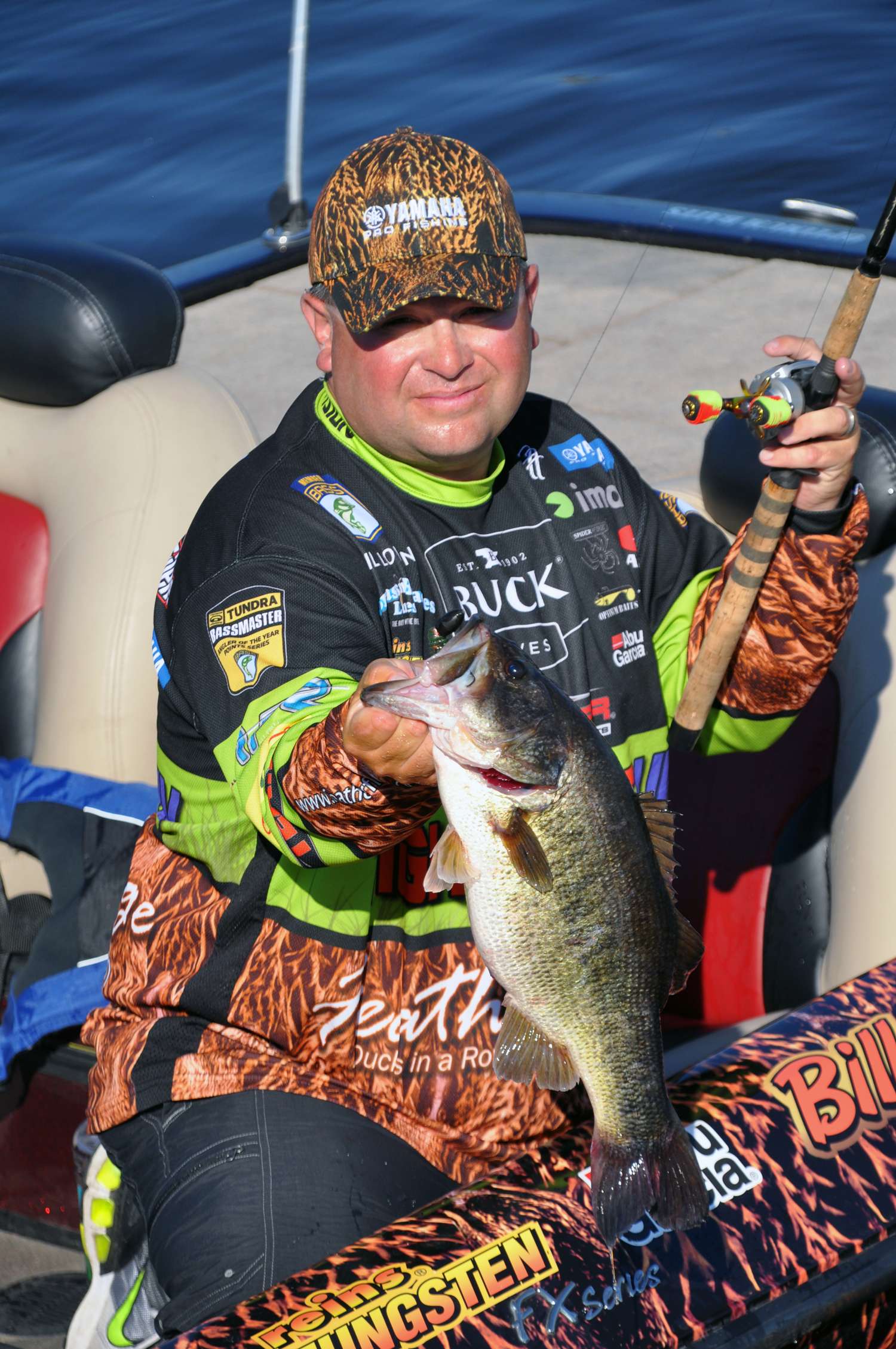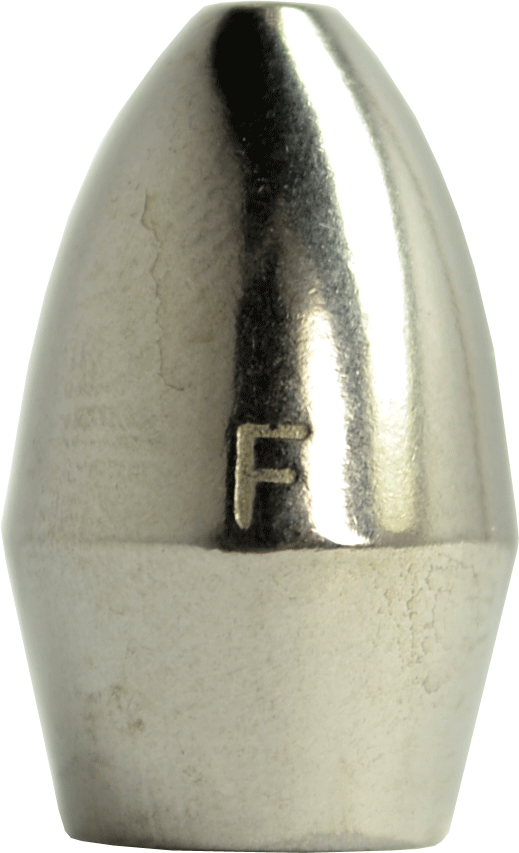
When is the biggest flipping weight on the market not quite big enough?
That was the conundrum confronting numerous Elite Series anglers as they sought to pry big bass out of the thickest cover on bodies of water like Lake Okeechobee, the California Delta and the Potomac River. Mainstream tungsten weight manufacturers have gradually edged the ceiling of their weight limitations from 1 ounce to 1 1/2 ounce, but some anglers felt they needed more.
“There are a couple of circumstances where an ounce and a half is just not enough,” said Dean Rojas. He believes that oftentimes the biggest bass on lakes like Okeechobee and Toho live right in the heart of the mat and a 2 ounce or greater weight may be necessary to put a bait in their faces.”
Rojas uses a relatively small craw or creature bait even with the outsized tungsten weight, and while it looks odd, its effectiveness outweighs any squeamishness he’s had as a result of its appearance. “When I first started flipping, I used a 3-inch craw, a 5/0 hook and a 1-ounce lead weight. I thought there was no way they’d eat it, but they do. It’s pretty dark under there so they probably think it’s just one big thing.”
Ohio pro Bill Lowen frequently uses weights made by Reins, a Japanese company that manufactures weights up to 2 1/2 ounces. It’s rarely an all-day effort. Usually, he’ll have another rod rigged up with a more standard-sized flipping weight but will pick up the bigger tungsten when he comes to cover that demands it.
“On lakes like Cumberland in Ohio, when the water comes up in the spring it creates leaf mats,” Lowen said. “The floods wash all sorts of things like tree limbs into the water, and there’s no way you can get through them with anything but that big weight. There are certain situations where you definitely need it.”
California pro Ish Monroe said he hasn’t found hydrilla thick enough to require a 2-ounce-plus weight, but the leafy pennywort of the California Delta made him an early adapter. “My buddies were sending them to me from Japan,” he said. “I don’t even know what brand they were.”
Of course, there are naysayers who believe that just about any cover can be penetrated with the one and a half. Even among those who’ve felt the need for something bigger, many have given up on it because they tend to lose an inordinate number of fish when the big weight is tied on. Apparently it tends to force the fish’s mouth open on the hook set.
 Lowen said that with modern braid and rods, there’s no need to really hammer the hook home and force the weight to pop the fish’s mouth open. “When guys really bust them, that’s when they get into trouble,” he said. “All you really need to do is sweep the rod.”
Lowen said that with modern braid and rods, there’s no need to really hammer the hook home and force the weight to pop the fish’s mouth open. “When guys really bust them, that’s when they get into trouble,” he said. “All you really need to do is sweep the rod.”
Monroe noted that no matter what happens, you’ll always lose some fish that chomp down on the big weight. That’s just the nature of the beast. But he added that certain equipment changes have increased his landing percentages.
“Your tackle is more important than anything else,” he said. “I use a different rod for punching than most people. Most guys use a meat stick. I prefer more tip, but the 8-foot Daiwa Steez that I use for most punching has too much tip for the 2-ounce weights. It bends back to the first foot, so with the big weight, I switch to a Daiwa Zillion, which has tip for the first 6 inches, then goes straight to backbone.” He pairs it with a rocket-fast 7.3:1 gear ratio Daiwa Type R Zillion, which he calls “the Ferrari. The super-fast reel allows him to use a ‘reel pressure set,’” which also reduces lost fish.
One other helpful hint that Monroe provided is to buy the biggest weights only in their unpainted versions. “It slips through their mouth easier,” he explained. “Tungsten is hard, but the paint is soft. And with a painted weight, the bass’s teeth grab into the weight and you’ll never get a good hookset. The unpainted one slips through their mouths easier.”
 It’s not easy work to lob the big hunk of tungsten all day, or even part of a day. In fact, it can be backbreaking work. But when you come to cover that seems impenetrable – whether it be grass, leaves or other debris – sometimes the only way to dig out big bass is with the cannonball.
It’s not easy work to lob the big hunk of tungsten all day, or even part of a day. In fact, it can be backbreaking work. But when you come to cover that seems impenetrable – whether it be grass, leaves or other debris – sometimes the only way to dig out big bass is with the cannonball.
Big Tungsten Manufacturers
Reins: www.reinsfishing.com (up to 2 1/2 ounces)
Eco Pro Tungsten: www.ecoprotungsten.com (up to 2 ounces)
Alley’s Tungsten: www.alleystungsten.com (up to 2 1/4 ounces)





